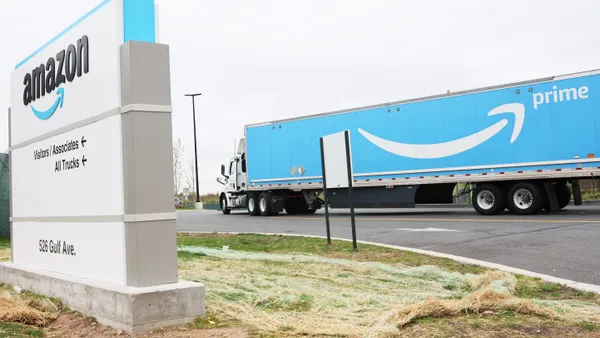Dive Brief:
- In order to undercut competition, Uber Freight is offering freight rates to shippers below market rate, according to a Morgan Stanley analysis reported by The Wall Street Journal.
- These shipper rates are then passed on, almost entirely (99%), to drivers on the platform, leading the analysts to conclude "meaningful" profitability is years in the future. The industry standard for the percentage of rates passed on to drivers is 80-85%, according to Morgan Stanley.
- Morgan Stanley estimated by 2023, Uber Freight will still hand over 97% of revenue to carriers. Uber Freight declined to comment on the report.
Dive Insight:
By maintaining pricing below its competitors, Uber Freight is running a play common among tech companies looking to disrupt a market: undercut pricing to gain market share, delaying profitability and then shift focus toward profits once competitors are thinned out and market dominance is assured.
Though there are dozens of examples of this strategy, Amazon is probably the most prominent. In the early years of Amazon Prime (it launched in 2005), free two-day shipping was not a profitable way to run an e-commerce company, but more than a decade later, the company's profits have surpassed $1.5 billion.
Notably, Amazon has entered the digital brokerage space as well, with reports of similarly undercutting of shipper rates. An Amazon spokesperson told Supply Chain Dive in April, "analysis suggesting dramatic undercutting of pricing is false."
All said, it is still very early days for digital freight brokerage. Claiming just a tiny fraction of a more than $70 billion pie, there is a lot of technology evolution, customer conversion and consolidation yet to come — especially as the incumbent players get more involved.
Getting shippers to try a new way of booking freight is a high hurdle to customer conversion, Drew McElroy, CEO of digital brokerage startup Transfix, told Supply Chain Dive. But if a pricing battle starts this early in the arc of this technology, that sentiment may soon shift.














